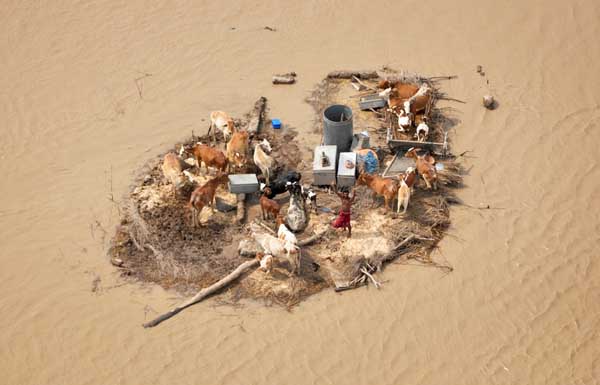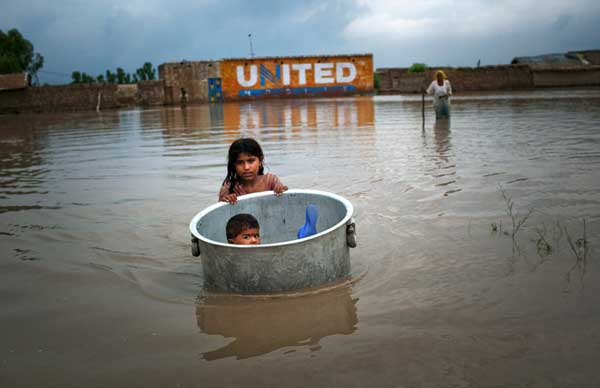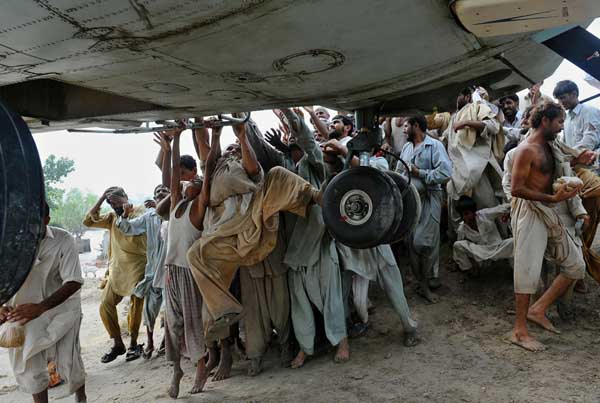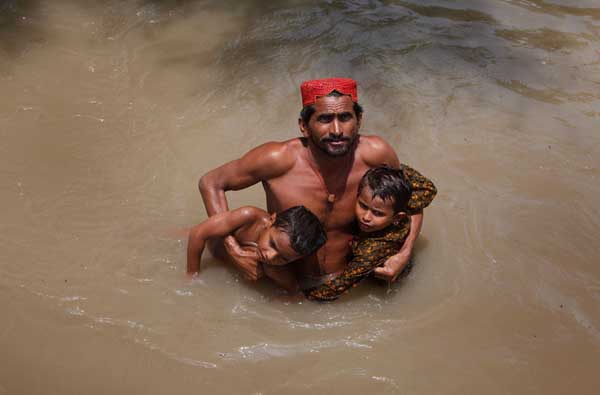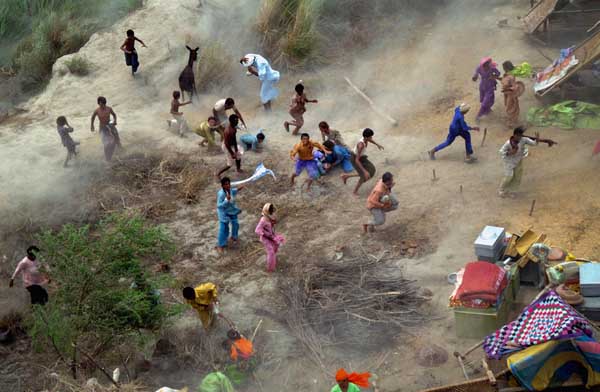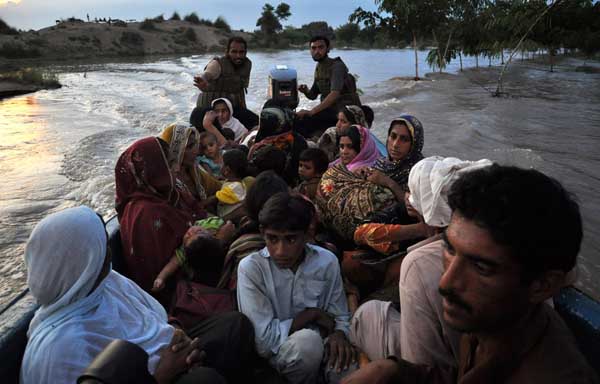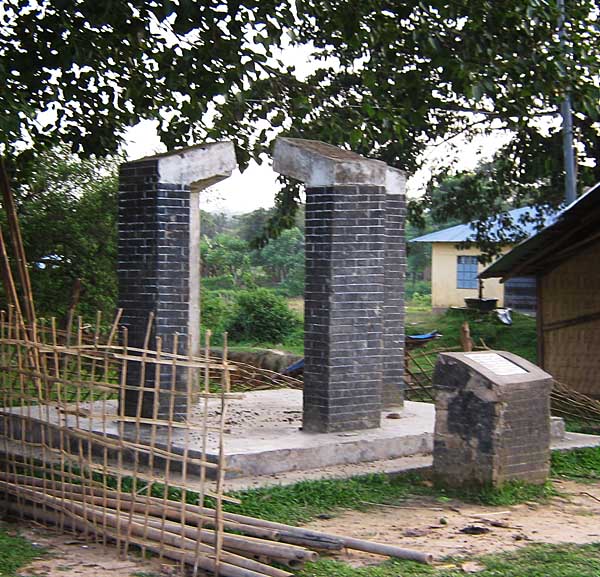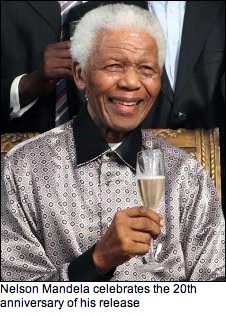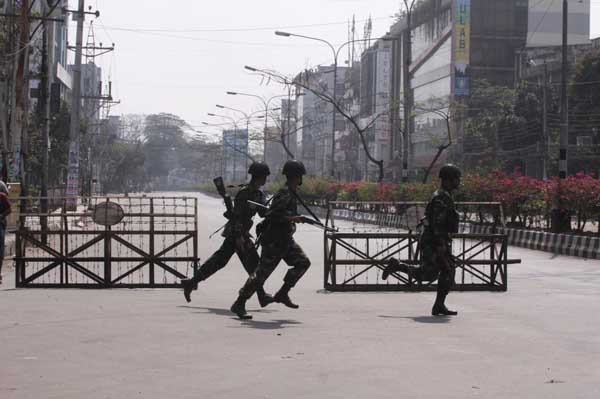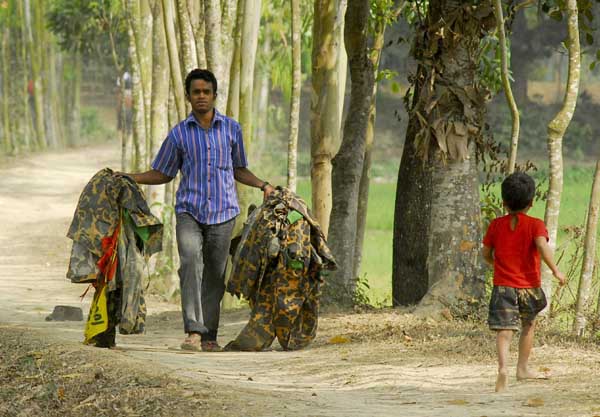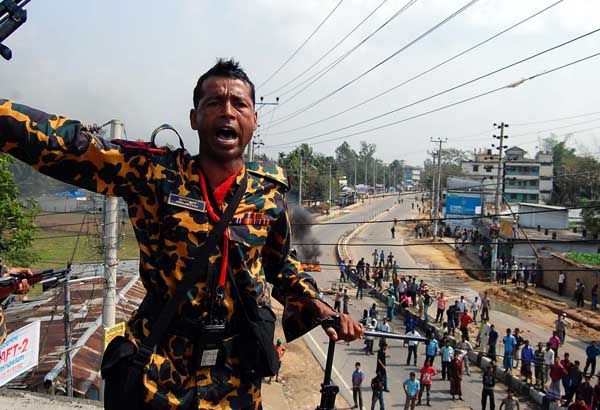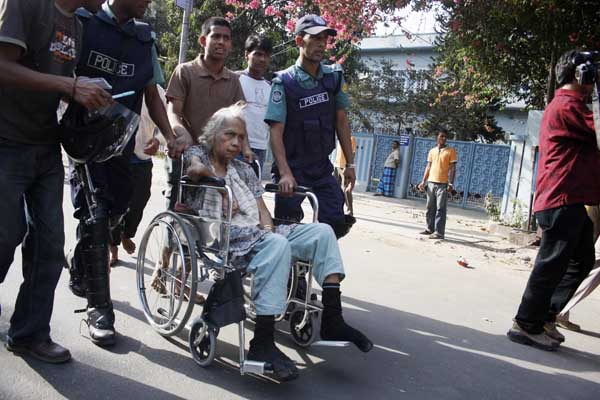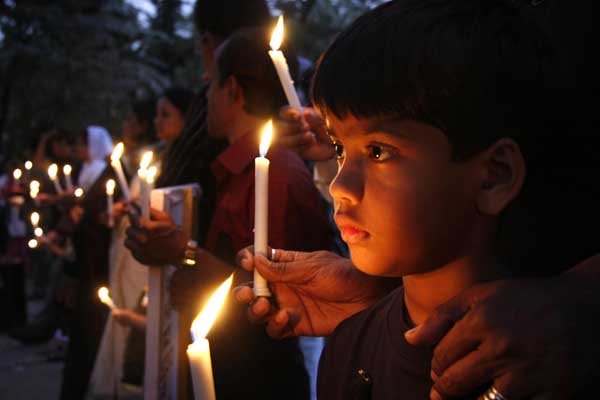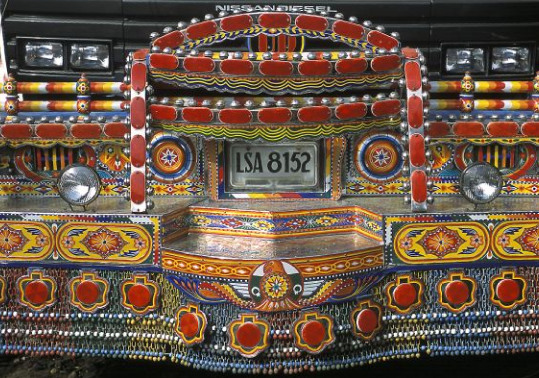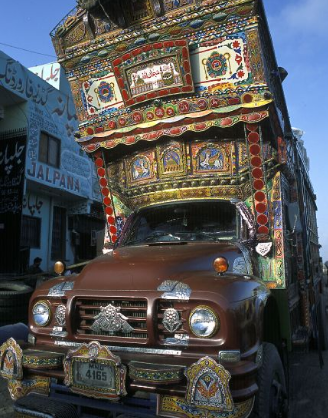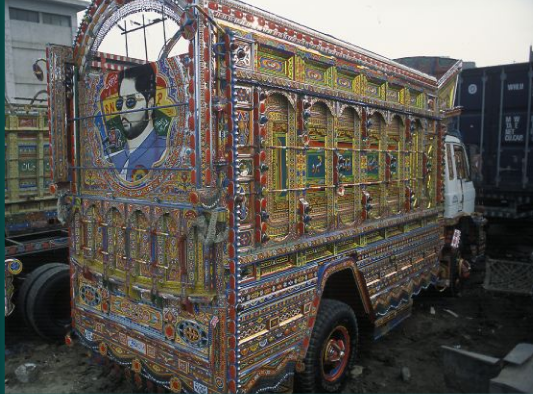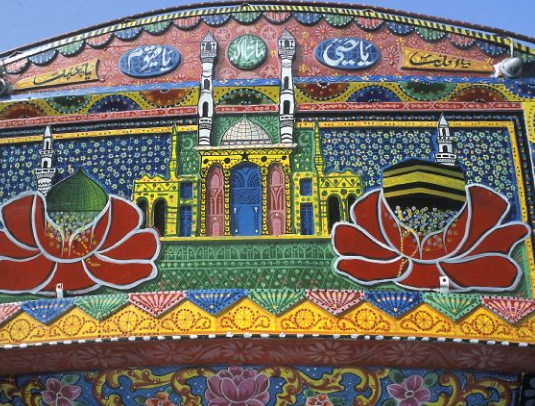by: Shahidul Alam and Rahnuma Ahmed
Rahnuma Ahmed writes?
My last column had ended with these words: ‘The current regime?s voter registration list has, in all probability, lessened the likelihood of fraudulent votes. But it also has, in all likelihood, laid the groundwork for installing a new regime of surveillance, one that will be deployed against the citizens of Bangladesh‘ (National ID Cards. In the Interest of Surveillance?, New Age, 29 September 2008). ?
Little did I know when I wrote it that Bangladeshi bloggers had intensely debated the pros and cons of national ID cards four weeks earlier. The discussion in amarblog.com had been generated by Ashiq’s Amra O Pari post, eulogising the electronic registration of voters, a feat that was termed a ‘silent revolution.’ Ashiq wrote, at first, no organisation had expressed its willingness to complete the task within the period stipulated by the government, not even foreign companies. Sky-high figures had been quoted. But fortunately, the Bangladesh army had submitted its own proposal to the government, just like any other organisation. Its budget was also the lowest.
A person who writes under the name of Incidental Blogger had raised these questions:?
— The Bangladesh army’s budget was the lowest — what is your source of information? Do you know who were the second and third bidders? Do you know why the latter failed to secure the contract??
— Who was in charge of the selection process? Who were the commitee members? Could you tell us how much freedom they had in reaching their decision, and your source of information? Was any internationally-recognised independent evaluator assigned??
— What was the criteria for selection??
Chor, another blogger, commented further down, the national ID card project is the task of the Election Commission. Of course, the EC can request the help of the army, this is not the problem. The problem is when public money is used to charge the public for services rendered. ?
Incidental Blogger further wrote, the ID card issue is linked to the issue of individual freedom, privacy etc., this is why western governments are finding it difficult to get their own electorates to agree. Not mincing words, he wrote, does the caretaker government in Bangladesh have the right to make a decision on something as fundamental as the national ID card, something that is a matter of state policy? Did it not happen very conveniently, almost too easily? Are you sure this information will not be shared with western intelligence agencies? He went on, you may look at it positively, but I look at it as the first step in Bangladesh turning into a fascist state. ?
I read and re-read the blog. It is good to know that my fears are shared by others. ?
While researching for my previous article, I had surfed the internet for information, and learnt that the voter roll project in Bangladesh was a “co-operative venture” between BIO-Key in the US, TigerIT in Bangladesh (their “systems integrator on the ground”), and the Bangladesh army.? ?
I had asked Shahidul when he came home whether he knew of TigerIT Bangladesh. No, never heard of them, he said. Hmmm, I said, their webpage says, the Cofounder and Chairman is Ziaur Rahman, it lists a Joseph Fuisz, as the Cofounder. And guess what, a Daily Star Weekend magazine article on Info-Tech says, `TigerIT Bangladesh Limited is an offshore technology campus of TigerIT, USA, with its corporate headquarters located in Northern Virginia’ (March 2, 2007), but this is not mentioned in their website. ?
Shahidul became curious. Read what happened next, in his words.
Shahidul Alam writes?
I knew about Tigers. There were the Bengal Tigers, our cricket team, even Tiger Beer. TigerIT was new. Having initiated DrikTap, the pioneering email network in Bangladesh in the early nineties, I thought I knew about the IT scene in the country. So when Rahnuma told me about this ‘cutting edge’ Bangladeshi company, I asked around amongst IT savvy peers. No one had heard of TigerIT. A quick search of the ‘who is’ database revealed that the domain tigeritbd.com had only been registered on 21st August 2007. So when on the 1st May 2007, the chief election commissioner had said the “countdown of the 18-month timeframe starts from today,” the domain www.tigeritbd.com did not even exist! ?
A quick search on Joseph Fuisz the co-founder of the company revealed that he was based in Washington DC. Since I was scheduled to give a presentation at the National Geographic in DC, I dropped Mr. Fuisz a line asking if I could interview him. The “out of office” response was followed by a mail saying he was away on a family holiday in Miami. It just so turned out, that I was presenting at Miami University on 30th September. I suggested we meet in Miami and provided my itinerary. Upon arrival at Miami, I received the following mail, “Unfortunately, I have been tied up in meetings all day today. Thus, I am sorry that it does not appear I will get to see you in Miami.” This was the man who was away on a family holiday for a week. I offered to meet papa Fuisz (Richard C Fuisz, MD), in Washington DC. I should have anticipated the response: “I am so sorry — your prior email did not come through (I just found it) and so I did not forward it to my Dad’s assistant. I think it is too late to schedule now.? Please accept my apologies.? I will email you some things about Tiger and hope to meet in you Bangladesh some day — very best, Joe Fuisz.” ?
I’ve had no further correspondence from Fuisz.?
Rahnuma Ahmed writes?
If you had met him, what would you have wanted to know, I ask Shahidul. His list of questions was ready: ?
(1) What were the factors leading to a newly formed company, TigerIT BD, being able to obtain such a prestigious and lucrative contract?
(2) What are the implications of having a biometric database for Bangladesh? Who might benefit from this data, nationally and internationally?
(3) Does your company TigerIT (the parent company of TigerIT BD) have any previous experience of working in Bangladesh or the region?
(4) Why did you choose to work with relatively inexperienced people in Bangladesh and set up a new company rather than teaming up with existing IT companies with a track record?
(5) Who are the main clients of your company TigerIT (the parent company)?
(6) What is your equity in TigerIT BD??
He grinned and added, but of course, I sent him a very general note saying we were fascinated by the news of what they had done and wanted to do a feature on the company for DrikNews.?
So, why are western citizens concerned? As Peter Boyle asks, what’s the fuss behind another little piece of plastic? What is dangerous is not the card itself, he says, but “the mother of all databases that is behind a compulsory national ID card system.” Chris Puplick, a former Liberal Senator who was a member of the joint select committee on the Australia Card, speaking of his `fear’ of national ID card systems wrote, “Should 20 million Australians have their liberties trashed so that we might — I repeat might — detect the two or three mad jihadists in our midst? Will files now be created on the basis that people belong to a certain religion, attend particular places of worship or hold specific political opinions?” ?
Does the national ID card system help to combat terrorism? Privacy International (PI), a global human rights group, in a 2004 study on the relationship between national ID cards and the prevention of terrorism was unable to “uncover any instance where the presence of an identity card system” was a significant deterrent to terrorist activity. I remember coming across a blog comment somewhere: `Want to be rid of terrorism? Pull troops out of Afghanistan and Iraq.’ Another blogger had said, ‘Governments quite often frighten me more than terrorists.’?
Some Bangladeshis — still carried away by the present military-backed caretaker government’s drive against corruption — may think that it will help clean up corruption. As a blogger had commented in drishtipat: `Like driver?s license renewal or getting cars inspection every year, the national ID card… will have huge impact on and spectacular change in the society.’ Those pro ID cards probably don’t know that computer disks containing detailed personal information on 25 million individuals, and 7.25 million families in Britain, went missing last year. Personal information included names, addresses, national insurance numbers, and data on almost every child under 16. According to experts, the information “could allow crimes beyond identity theft,” since some people use a child’s name or part of their address as password on their bank account. In other words, a combination of these details could allow criminals to break their code. Another critic says, if a government or criminal wanted to frame someone, amending, erasing, or adding to the details on one’s medical records, employment history, could be easily done, since all information would be stored on a single device.?
Khushi Kabir had left a comment on my column at Shahidul’s blog, speaking of her own disturbing experiences: `What was also worrying was the religious and other profiling done, albeit arbitrarily in majority of cases, despite that this information was not asked for in the form filled up prior to getting photographed or finger printed. My big teep must have confused them, so they asked for my religion, which I did not find necessary to provide them, or any other information that was not on the form. Others were not asked but religion was put on the basis of their ?assumption?. When challenged as to why they needed my religion or to keep it blank they stated that they were required by the ?authorities? to profile it. Shireen Huq had a similar experience. They informed her there was only space for four religions in the database ie Muslim, Hindu, Buddhist and Christian. No scope for others. This kind of information can be potentially frightening.’ ?
Of course yes, Khushi. As Jim Fussell of Prevent Genocide International points out, ethnic classification on ID cards in Rwanda, instituted by the Belgian colonial government and retained after independence, spelled a death sentence for Tutsis at any roadblock. No other factor, says Fussell, was more significant in facilitating the speed and magnitude of the 100 days of mass killing in Rwanda, that left 800,000 dead. ?
The near-deafening silence of Bangladeshi human rights organisations and activists on the national ID card issue, is remarkable. I wonder why? Are their campaigns waged aganist ‘locals’ only — the neighbourhood bully, the local rapist, the village acid-thrower? Do they shy away when human rights violations are caused by ‘big’ actors? Does speaking out against Big Brother’s `war on terror’ fall outside the prescribed terms of reference? ?
Do not misunderstand me, fighting against local power structures has not always been easy or convenient, as their own records of struggle show. But it is a global world, and we should learn from the African feminist who had said, I am oppressed not only by my patriarchal village headman, but equally so by the IMF and the World Bank. And I add, by western regimes who are waging terrorist wars against the world’s peoples.?
?

